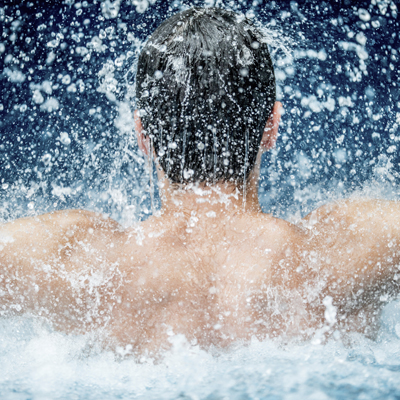How to Incorporate Swimming into Your Workout
 Did you know that swimming can help to shave off pounds while providing a great cardiovascular workout? In fact, swimming can also help build endurance by the sheer fact that time in the pool is more easily sustained by most athletes than time on the track. This means that you can burn calories by working out for longer periods of time, and have more fun in the process!
Did you know that swimming can help to shave off pounds while providing a great cardiovascular workout? In fact, swimming can also help build endurance by the sheer fact that time in the pool is more easily sustained by most athletes than time on the track. This means that you can burn calories by working out for longer periods of time, and have more fun in the process!
Swimming, regardless of experience level or age group, can be your primary workout or year-round complement to your regular, physical-fitness regimen. Aside from the cardiovascular and endurance benefits that swimming offers, most pools are open year-round, which translates to staying in shape during the off-season and avoiding any unsightly, post-holiday weight gain.
Cardiovascular Workout
Swimming consistently and using the proper technique provides an unparalleled balance between a sustainable cardiovascular workout and endurance training. Swimming is such a good cardiovascular and aerobic workout because it requires a constant supply of oxygen to the body’s muscles vis-a-vis long exercise times. Because swimming can usually be sustained for longer periods of time than running or other higher-impact workouts, staying active in the pool can help burn more calories and sidestep the harmful effects of stress, per any sustained aerobic activity.
Physique and Cross Training
Swimming is said to promote the growth of lean, long muscles. These lean, long muscles actually complement dense and compact muscles that are created through weight training. Aside from building both muscle systems, coupling swimming with other forms of cardiovascular exercise helps ensure that you keep your figure while keeping your metabolism high – the lean, long muscles bolstered through swimming can keep metabolism and the body’s calorie-burning mechanisms high.
Working out in the pool increases muscle strength and allows for a year-round cardiovascular workout. In addition, swimming can give your body a break from higher-impact workouts, such as weight training or distance running. By crafting a workout regimen that couples different muscle systems and levels of impact, you can be assured of improving your physique and even sidestepping injury. Athletes who grind away on the track all day are more prone to injury and exhaustion than athletes who incorporate swimming and other low-impact exercises into their routine.
Increased Core Strength and Flexibility
Swimming helps to enhance core conditioning as it uses different muscle systems at the same time. That said, about three-fourths of a swimming workout comes via the muscles in the upper body, so incorporating a fin or kick-board regimen can ensure that you’re using both upper and lower muscles during your time in the pool. Also, just the fact that swimming involves an upper and lower workout sets it above running in some respects; swimming can usually be sustained longer than running, which suggests swimming could burn more calories over the long haul.
Working out in a heated pool relaxes muscles and facilitates stretching and flexibility. As an added benefit, swimming after a weight-training regimen that burns lactic acid at a high rate can ensure that toxins are flushed out of your system. Flushing out toxins can help prevent next-day soreness, which means you can be back in the pool and burning calories in record time!





